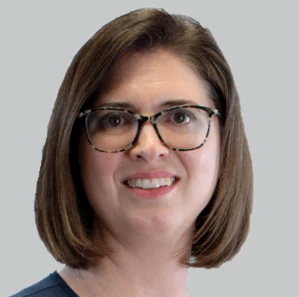Article
Winning Together With the Community of Women in Neurology
Author(s):
Collaboration can result in greater success than what one can achieve alone, and for women physicians, this rings truer than ever before, writes Jill M. Farmer, DO, MPH.

Jill M. Farmer, DO, MPH

Medical language is full of acronyms, and I have always loved that the acronym for “women in neurology” spells out “win.” As we celebrate National Women Physicians Day, it offers me time to reflect on what a winning effort it has truly been empowering and supporting women in medicine.
For me, in large part, it has to do with a concerted effort of support. From my training through my attending career, I have been fortunate to find support from many women colleagues, near and far. I am a neurologist and a fellowship-trained movement disorder specialist. My subspecialty is made up of a high percentage of women, and I was lucky to go through training with some of the best. As I started fellowship, I was not only a new fellow but a new mom. My cofellow, on her own accord, took it upon herself to see the first and last patient of the day which allowed me time to pump in the morning and make it to daycare with some time to spare most days. The ripple effect of that act of kindness impacted me both personally and professionally. It helped me love my training and achieve some of that elusive balance that plagues many working parents so that I could be present and mentally and emotionally invested where I was needed for both my patients and my family.
A community of support is essential. The adage “it takes a village” is not new, and that is where the Women Neurologist Group (WNG) has been a fertile resource as well. I am 1 of 4 lead administrators who oversee a team of moderators with the sole purpose of creating a community of comradery for women neurologists from residency through retirement and the plethora of paths that get us from point A to point B. This online community is international and over 4000 strong, and links us to everyone from trainees to titans of industry and national clinical leaders. It allows a safe space to discuss cases, amplify accomplishments, seek opportunities, and vent when needed to an understanding audience.
A community helps shape the culture, and there has been a shift in the culture of medicine that was set in motion during the pandemic. That shift largely revolved around the adoption of telemedicine. Using the networking available through WNG and professional societies, advocating for telemedicine presented an opportunity for those who welcome this approach to keep the momentum of the movement going and to not lose the gains in flexibility this approach to clinical care affords. It does not work for everyone, but it works for many, and that needs to be defended.
Women in neurology are now in positions of influence—the president of both the Movement Disorder Society and the American Academy of Neurology are women—and more women are not just present in, but presiding over, committees and task forces. But looking at diversity, equity, and inclusion statistics leaves no doubt that more needs to be done. I am still often the only woman in the room or at the table, but I am pulling out the chair and using my position to invite others in to participate and advocate for policies that continue to change the culture to move us forward. That is a win for the entire medical profession.
This piece was put together in partnership with the Women Neurologists Group. For more information about WNG, check out their Twitter account, @WNGtweets.




